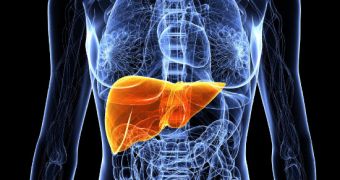A bunch of skin cells recently found themselves experiencing a major personality crisis, and it was all because of a team of scientists working with the Gladstone Institutes and the University of California, San Francisco.
Thus, these researchers claim to have succeeded in getting several skin cells to undergo a series of transformations and turn into liver cells that were both mature and functioning.
The scientists who worked on this project further detail that, when transplanted into laboratory animals whose anatomy had been altered to mimic liver failure, the cells that they engineered kept flourishing on their own.
The specialists explain that, instead of trying to get the skin cells that they worked with to enter a stem cell-like state, they turned them into cells resembling endoderm ones, i.e. cells that grow to form major body organs such as the liver.
“Instead of taking the skin cells back to the beginning, we took them only part way, creating endoderm-like cells,” researcher Saiyong Zhu explains.
“This step allowed us to generate a large reservoir of cells that could more readily be coaxed into becoming liver cells,” he further details on his and his colleagues' work.
The skin cells that the researchers used in their experiments were turned into endoderm-like ones with the help of both reprogramming genes and chemical compounds. Once in this state, one other set of genes and compounds was used to turn them into liver cells.
“The cells began to take on the shape of liver cells, and even started to perform regular liver-cell functions. They weren't fully mature cells yet – but they were on their way,” says specialist Milad Rezvani.
According to Eurek Alert, the former skin cells became mature, functional liver cells several months after their being transplanted into the bodies of laboratory mice.
Thus, the animals used in these experiments all came to experience a boost the human liver protein leveled in their bodies.
The Gladstone Institutes and University of California, San Francisco researchers say that, in time, it could be possible to use this method of turning skin cells into liver ones to help human patients.
“Many questions remain, but the fact that these cells can fully mature and grow for months post-transplantation is extremely promising.”
“In the future, our technique could serve as an alternative for liver-failure patients who don't require full-organ replacement, or who don't have access to a transplant due to limited donor organ availability,” researcher Holger Willenbring argues.

 14 DAY TRIAL //
14 DAY TRIAL //